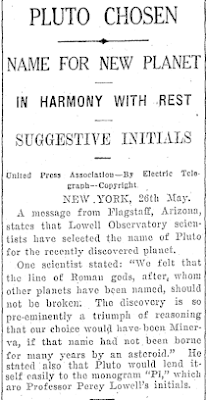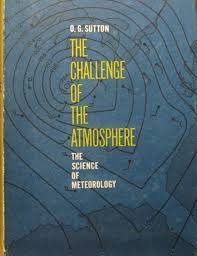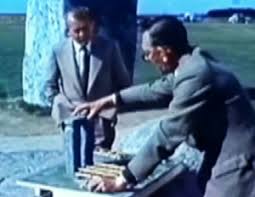The 146th day of the year; 146 is 222 in base eight. *What's So Special About This Number
Jim Wilder@wilderlab pointed out that the sum of the divisors of 146; 1+2+73+146 also equals 222.
Finding value of 222 (or other numbers) in base n is nice introduction to polynomials, and (IMHO) leads students to understand polynomials (and base 10) much better.
The decimal expansion of 1/293 has a period of 146 digits.
The concatenation of 146 and 137, 146137 = 317 x 461, both prime. Notice that the same six digits in the product are in the factors, a vampire number. This is the second smallest vampire number with prime factors. (the digits need not be in order, 1260 = 21 × 60 is also a Vampire number.
146 is a number n, for which n2+1 is prime. Goldbach conjectured that any number in this sequence could be written as the sum of two other numbers in the sequence. For 146, one such solution is 146 = 20 + 126 *OEIS
The absolute difference between any two digits of 146 is prime. *Prime Curios, For how many three digit numbers is this true?
Another nice palindrome from Das Ambigram, 146 = 2x5x7+3+3+7x5x2
If you roll two pairs of standard fair dice, the number of ways that both pair can turn out with equal face value showing is 146 out of 1296. The numerator for getting any of the numbers 2 through 12, is an interesting sequence, 1 + 4 + 9 + 16 + 25 + 36 + 25 + 16 + 9 + 4 + 1.... Guess you could say all fair and SQUARE.
146 is Roman Numerals uses all the symbols below 500, CXLVI once each.
1676 Antonie van Leeuwenhoek applied his hobby of making microscopes from his own handmade lenses to observe some water running off a roof during a heavy rainstorm. He finds that it contains, in his words, "very little animalcules." The life he has found in the runoff water is not present in pure rainwater. This was a fundamental discovery, for it showed that the bacteria and one-celled animals did not fall from the sky. When a ball of molten glass is inflated like a balloon, a small droplet of the hot fluid collects at the very bottom the bubble. Leeuwenhoek used these droplets as microscope lenses to view the animalcules. Despite their crude nature, those early lenses enabled Leeuwenhoek to describe an amazing world of microscopic life. * TIS Compound microscopes (that is, microscopes using more than one lens) had been invented around 1595, nearly forty years before Leeuwenhoek was born. Several of Leeuwenhoek's predecessors and contemporaries, notably Robert Hooke in England and Jan Swammerdam in the Netherlands, had built compound microscopes and were making important discoveries with them. These were much more similar to the microscopes in use today. Thus, although Leeuwenhoek is sometimes called "the inventor of the microscope," he was no such thing.
1796 Gauss writes to his counselor, Zimmerman, who had apparently encouraged Gauss to publish the results of his studies on construction of the 17-gon, and the quadratic reciprocity law. Guass wrote that he was prepared to undertake the project, but preferred to write it in German before doing so in Latin where he feared he would be subject to criticism "from another side."
"Since I have an Euler and a Lagrange as predecessors I shall have to marshall great diligence for the composition itself."
*Uta Merzbach, An Early Version of Guass' Disquisitiones Arithmeticae, Mathematical Perspectives, 1981
1896 The Dow Jones Industrial Average was created by Charles Dow and Edward Jones, New York financial reporters. Originally consisted of 11 stocks. They published The Customers Appreciation Letter, which would become the Wall Street Journal. The first index published was on July 3, 1884 *Kane, Famous First Facts
1901 Giuseppe Peano terminated his services to the Royal Military Academy in Turin where he had taught for fifteen years. The trouble was with his teaching. Earlier he was a very good teacher and the author of several excellent texts, but as his work in mathematical logic matured he devoted too much time to what the students called “the symbols.” [H. C. Kennedy, Peano,p. 100] *VFR
1906 German airship designer August von Parseval succeeded launching his new airship at Berlin Tegel military field. In contrast to his rival Zepellin, Parseval’s airships were non-rigid or semi-rigid airships. @SciHiBlog
An airship is any powered, steerable aircraft that it is inflated with a gas that is lighter than air.
“Airship” and “dirigible” are synonyms; a dirigible is any lighter-than-air craft that is powered and steerable, as opposed to free floating like a balloon. The word “dirigible” is often associated with rigid airships but the term does not come from the word “rigid” but from the French verb diriger (“to steer”). Dirigibles include rigid airships (like the Hindenburg), semi-rigid airships (like the Zeppelin NT), and blimps (like the Goodyear blimp).*Airships net
1930 Name for newly discovered planet Pluto announced by United Press. The name had been the suggestion of an English 11 year old girl to her grandfather, a former librarian at the Bodleian Library in Oxford. (see March 14, 1930). I think the fact that PL abbreviation for Pluto (and Percevil Lowell) influenced the folks at the Flagstaff observatory.
1969, the Apollo 10 astronauts returned to Earth after a successful eight-day dress rehearsal for the first manned moon landing. Apollo 10 mission, launched 18 May, was a complete staging of the Apollo 11 mission without actually landing on the Moon. The mission was the second to orbit the Moon and the first to travel to the Moon with the entire Apollo spacecraft configuration. Astronauts Thomas Stafford and Eugene Cernan descended inside the Lunar Module to within 14 kilometers of the lunar surface (achieving the closest approach to the Moon before Apollo 11 landed two months later). Apollo 10 splashed down at 12:52 pm on 26 May, less than 4 miles (6.4 km) from the target point and the recovery ship.
2002 The minor planet 28242 was named after the Mongolian Mathematician Minggatu ( Sharabiin Myangat) as 28242 Mingantu. He was an astronomer, mathematician, and topographic scientist at the Qing court. His courtesy name was Jing An. He was the first person in China who calculated infinite series and obtained more than 10 formulae. In the 1730s, he first established and used what was later to be known as Catalan numbers. The Jesuit missionaries' influence, particularly Pierre Jartoux, can be seen by many traces of European mathematics in his works. *Wik
Ming Antu's geometrical model for trigonometric infinite series.
2021 A renowned astrophysicist and investigator into one of science’s great unsolved mysteries has become the first woman to be appointed as Astronomer Royal for Scotland.
Professor Catherine Heymans, a world-leading expert on the physics of the so-called dark universe, has been awarded the prestigious title, which dates back almost 200 years.
Heymans was recommended to the Queen for the role by an international panel, convened by the Royal Society of Edinburgh.
1623 Sir William Petty FRS (26 May 1623 – 16 December 1687) was an English economist, scientist and philosopher. He first became prominent serving Oliver Cromwell and Commonwealth in Ireland. He developed efficient methods to survey the land that was to be confiscated and given to Cromwell's soldiers. He also managed to remain prominent under King Charles II and King James II, as did many others who had served Cromwell.
He was Member of the Parliament of England briefly and was also a scientist, inventor, and entrepreneur, and was a charter member of the Royal Society. It is for his theories on economics and his methods of political arithmetic that he is best remembered, however, and to him is attributed the philosophy of 'laissez-faire' in relation to government activity. He was knighted in 1661. He was the great-grandfather of Prime Minister William Petty Fitzmaurice, 2nd Earl of Shelburne and 1st Marquess of Lansdowne.
Petty was a founder member of The Royal Society. He was born and buried in Romsey, and was a friend of Samuel Pepys.
He is best known for economic history and statistic writings, pre-Adam Smith. Of particular interest were Petty's forays into statistical analysis. Petty's work in political arithmetic, along with the work of John Graunt, laid the foundation for modern census techniques. Moreover, this work in statistical analysis, when further expanded by writers like Josiah Child documented some of the first expositions of modern insurance. Vernon Louis Parrington notes him as an early expositor of the labour theory of value as discussed in Treatise of Taxes in 1692.
Petty was knighted in 1661 by Charles II and returned to Ireland in 1666, where he remained for most of the next twenty years. *Wik
1667 Abraham De Moivre (26 May 1667 in Vitry-le-François, Champagne, France – 27 November 1754 in London, England) French mathematician who was a pioneer in the development of analytic trigonometry and in the theory of probability. He published The Doctrine of Chance in 1718. The definition of statistical independence appears in this book together with many problems with dice and other games. He also investigated mortality statistics and the foundation of the theory of annuities. He died in poverty, and correctly predicted the day of his own death. He found that he was sleeping 15 minutes longer each night and from this the arithmetic progression, calculated that he would die on the day that he slept for 24 hours. *TIS
Born in Vitry-le-Fran¸cois, France. Being a Protestant, he emigrated to England following the Edict of Nantes in 1685 where he eked out a living as a tutor of mathematics. He became thoroughly Anglicized and pronounced his name “Mowve-re.” *VFR
In Miscellanea Analytica (1730) appears Stirling's formula (wrongly attributed to Stirling) which de Moivre used in 1733 to derive the normal curve as an approximation to the binomial. In the second edition of the book in 1738 de Moivre gives credit to Stirling for an improvement to the formula. De Moivre is also remembered for his formula for (cos x + i sin x)n which took trigonometry into analysis.
1750 William Morgan, FRS (26 May 1750– 4 May 1833) was a Welsh physician, physicist and statistician, who is considered the father of modern actuarial science. He is also credited with being the first to record the "invisible light" produced when a current is passed through a partly evacuated glass tube: "the first x-ray tube".
He won the Copley Medal in 1789, for his two papers on the values of Reversions and Survivorships, printed in the last two volumes of the Philosophical Transactions of the Royal Society, in the field of actuarial science:
"On the Probabilities of Survivorships Between Two Persons of Any Given Ages, and the Method of Determining the Values of Reversions Depending on those Survivorships", 1788–1794
"On the Method of Determining, from the Real Probabilities of Life, the Value of a Contingent Reversion in Which Three Lives are Involved in the Survivorship". Philosophical Transactions of the Royal Society of London, vol. 79 (1789) pp. 40–54
He was elected a Fellow of the Society, in May of the following year.
Advised by Joseph Priestley, a family friend, he developed an interest in scientific experimentation and is credited with being the first to record the "invisible light" produced when a current is passed through a partly evacuated glass tube: "the first x-ray tube"*Wik
1826 Richard Christopher Carrington (26 May 1826 – 27 November 1875) English astronomer who was the first to map the motions of sunspots and thus discover from them that the Sun rotates faster at the equator than near the poles (equatorial acceleration). He observed that the sunspots were not attached to any solid object, and also discovered the movement of sunspot zones toward the Sun's equator as the solar cycle progresses. On 1 Sep 1859, Carrington was the first to record the observation of a solar flare. *TIS
View of Richard Carrington’s Observatory at Redhill, Surrey, title-page vignette of his A catalogue of 3735 circumpolar stars observed at Redhill, 1857 (Linda Hall Library)
Richard Carrington’s diagram of sunspots, Sep. 1, 1859, with two solar flares marked at A and B, originally published in Monthly Notices of the Royal Astronomical Society, vol. 20, 1859 (welt.de)
1837 Washington Augustus Roebling (May 26, 1837 – July 21, 1926) U.S. civil engineer under whose direction the Brooklyn Bridge, New York City, was completed in 1883. The bridge was designed by Roebling with his father, John Augustus Roebling, from whom he had gained experience building wire-rope suspension bridges. Upon his father's death, he superintended the building of the Brooklyn Bridge (1869-83). He was disabled by decompression sickness after entering a caisson in 1872. He was brought out nearly insensible and his life was saved with difficulty. Because of resulting poor health, he directed operations from his home in Brooklyn overlooking the site. Though he continued to head the family's wire-rope manufacturing business for several years, medical problems forced retirement (1888).*TIS
 |
| *Artists' conception, by Currier and Ives, of the bridge while construction was underway, 1872 |
1951 Sally Kristen Ride (May 26, 1951 – July 23, 2012) was an American astronaut and physicist.Born in Los Angeles, she joined NASA in 1978, and in 1983 became the first American woman and the third woman to fly in space, after cosmonauts Valentina Tereshkova in 1963 and Svetlana Savitskaya in 1982. She was the youngest American astronaut to have flown in space, having done so at the age of 32.
Ride was a graduate of Stanford University, where she earned a Bachelor of Science degree in physics and a Bachelor of Arts degree in English literature in 1973, a Master of Science degree in 1975, and a Doctor of Philosophy in 1978 (both in physics) for research on the interaction of X-rays with the interstellar medium. She was selected as a mission specialist astronaut with NASA Astronaut Group 8, the first class of NASA astronauts to include women. After completing her training in 1979, she served as the ground-based capsule communicator (CapCom) for the second and third Space Shuttle flights, and helped develop the Space Shuttle's robotic arm. In June 1983, she flew in space on the Space Shuttle Challenger on the STS-7 mission. The mission deployed two communications satellites and the first Shuttle pallet satellite (SPAS-1). Ride operated the robotic arm to deploy and retrieve SPAS-1. Her second space flight was the STS-41-G mission in 1984, also on board Challenger. She spent a total of more than 343 hours in space. She left NASA in 1987.
Ride worked for two years at Stanford University's Center for International Security and Arms Control, then at the University of California, San Diego, primarily researching nonlinear optics and Thomson scattering. She served on the committees that investigated the loss of Challenger and of Columbia, the only person to participate in both. Having been married to astronaut Steven Hawley during her spaceflight years and in a private, long-term relationship with former Women's Tennis Association player Tam O'Shaughnessy, she is the first astronaut known to have been LGBT. She died of pancreatic cancer in 2012.
 millenium until nine centuries later. Bede held that the earth was a sphere. He preserved Pytheas' suggestion relating tides to the phases of the moon, and followed Seleucus' idea that a high tide is a local effect and does not occur everywhere at the same point in time. *TIS
millenium until nine centuries later. Bede held that the earth was a sphere. He preserved Pytheas' suggestion relating tides to the phases of the moon, and followed Seleucus' idea that a high tide is a local effect and does not occur everywhere at the same point in time. *TISHAC SUNT IN FOSSA BEDAE VENERABILIS OSSATranslated from the Latin, this means 'In this tomb are the bones of the Venerable Bede' *Religion Facts
1838 Ernest Gaston Joseph Solvay (16 April 1838 – 26 May 1922) was a Belgian chemist, industrialist and philanthropist.
Belgian industrial chemist who invented the Solvay Process (1863), a commercially viable ammonia-soda process for producing soda ash (sodium carbonate), widely used in the manufacture of such products as glass and soap. Although a half-century before, A.J. Fresnel had shown (1811) that sodium bicarbonate could be precipitated from a salt solution containing ammonium bicarbonate, many engineering obstacles had to be overcome. Solvay's successful design used an 80 foot tall high-efficiency carbonating tower in which ammoniated brine trickled down from above and carbon dioxide rose from the bottom. Plates and bubble caps helped create a larger surface over which the two could react forming sodium bicarbonate. *TIS
In 1911, he began a series of important conferences in physics, known as the Solvay Conferences, whose participants included Max Planck, Ernest Rutherford, Maria Skłodowska-Curie, Henri Poincaré, and (then only 32 years old) Albert Einstein. A later conference would include Niels Bohr, Werner Heisenberg, Max Born, and Erwin Schrödinger.*Wik
The portrait of participants to the first Solvay Conference in 1911. Ernest Solvay is the third seated from the left. Solvay was not present at the time the photo was taken, so his photo was cut and pasted onto this one for the official release.
267 - 1 = 147573952589676412927 = 761838257287 × 193707721
Credits :
*CHM=Computer History Museum
*FFF=Kane, Famous First Facts
*NSEC= NASA Solar Eclipse Calendar
*RMAT= The Renaissance Mathematicus, Thony Christie
*SAU=St Andrews Univ. Math History
*TIA = Today in Astronomy
*TIS= Today in Science History
*VFR = V Frederick Rickey, USMA
*Wik = Wikipedia
*WM = Women of Mathematics, Grinstein & Campbell















.jpg)





.jpg)








No comments:
Post a Comment